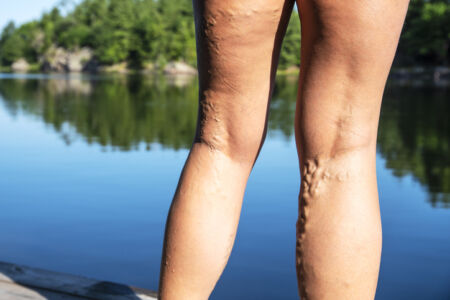
The bulging red and twisting veins that usually appear on your legs are known as varicose veins, and although they may be unsightly, it’s common for people to leave them untreated if they don’t cause significant discomfort.
Although your varicose veins are causing only cosmetic concerns, allowing them to progress may impact your health. There are several symptoms to be on the lookout for, some of which are more severe than others.
Most people will seek treatment for varicose veins to improve the appearance of their legs, especially if they are experiencing only mild symptoms. You may have some pain in your legs or swelling, and your skin may itch or feel tender.
While these symptoms are common, it’s also possible that you may not feel any discomfort at all. Depending on your health and lifestyle, varicose veins can be asymptomatic.
Just because varicose veins don’t cause significant symptoms in their beginning stages doesn’t mean that they will remain dormant. As blood continues to pool in the valves, the vein walls will expand and may eventually burst.
If a leak occurs, the blood can lead to discoloration of the skin along with a thick consistency. One of the most severe symptoms of untreated varicose veins is leg ulcers, which occur when leaking blood breaks down tissues. More severe varicose veins can “rupture” if nicked and often result in an emergency room visit.
Even if you aren’t experiencing any symptoms currently, it’s suggested that you receive an examination for your varicose veins. Treating diseased veins early prevents more serious complications that could require invasive and costly treatment.
Depending on the size and location of your varicose veins, several treatments may be considered to remove them. In the past, varicose veins were removed through an invasive surgical procedure known as “vein stripping”, which is often painful and can require 2-6 weeks for full recovery. Today we have less invasive options widely available that require little downtime and comparatively little discomfort.
Endovenous laser treatment (EVLT), radio frequency vein ablation (Venefit), Clarivein (mechano-chemical) or Venaseal (glue) both requiring no anesthesia/needle sticks) sclerotherapy and ambulatory phlebectomy are all available to close and/or remove varicose veins and faulty valves.
With the variety of treatments available, it’s wise to determine the best method for your needs and your anatomy. With a consultation at Center for Vein Restoration, you can learn about the severity of your diseased veins, gain a diagnosis and find the right treatment for your individual case.
Nowadays, recovering from varicose vein treatment is fairly straightforward. Whereas traditional vein treatments would require lengthy downtimes, limited mobility and some pain, minimally invasive treatments that are laser/RF/chemical or injection-based are more targeted in their effectiveness and cause less discomfort during and after the procedure.
Today’s treatments are even considered safer than methods of the past as they reduce chances of infection or complications later on.
Center for Vein Restoration uses nearly every treatment available to treat diseased veins, and the staff is ready to find the most efficient solution for you. To get started on your varicose vein treatment, schedule a consultation.